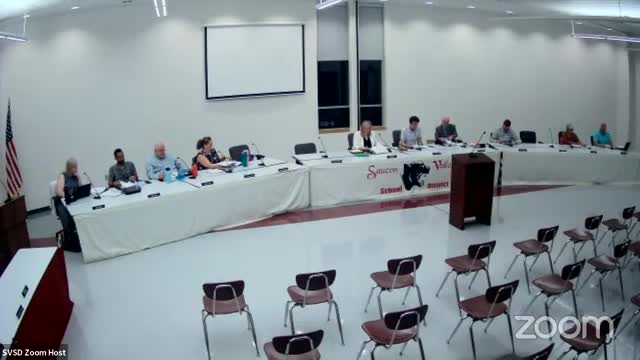School Districts Clash Over Funding and Expansion Dispute
August 14, 2024 | Saucon Valley SD, School Districts, Pennsylvania
This article was created by AI summarizing key points discussed. AI makes mistakes, so for full details and context, please refer to the video of the full meeting. Please report any errors so we can fix them. Report an error »

In a recent meeting of the Saucon Valley School District Board, significant discussions centered around proposed revisions to the articles of agreement with the Bethlehem Area Vocational-Technical School (BAVTS). The board is considering a shift from a dual funding model—where operational costs are based on student enrollment and capital expenditures on market value—to a singular approach based solely on student usage of the facility. This change aims to address longstanding disparities in funding contributions among the three sending school districts.
Board members highlighted that the current agreement, which has been in place for over 30 years, is set to expire next year. The proposed revisions are motivated by concerns that Saucon Valley has historically paid significantly more per student compared to its counterparts, with estimates suggesting a potential $2 million excess over the next 20 years if the current funding structure remains unchanged. This financial burden, board members argue, diverts resources that could be better utilized within their own district.
The meeting also addressed the need for greater local control in decision-making processes regarding future projects at BAVTS. Currently, a majority vote from two of the three districts can dictate significant changes, potentially sidelining Saucon Valley's interests. The proposed revisions seek to ensure that any major decisions require a majority vote from all three districts, thereby enhancing Saucon Valley's representation.
While the majority of board members expressed support for the proposed changes, some voiced concerns about the timing and the potential for escalating legal costs associated with the negotiations. Critics argued that the board should have pursued these discussions earlier and warned that the current approach could jeopardize the relationship with BAVTS.
The board's decision to formalize its position on the proposed revisions is seen as a crucial step in advocating for a fairer funding model and ensuring that Saucon Valley's interests are adequately represented in future agreements. The outcome of these discussions will have lasting implications for the district's financial commitments and educational resources in the years to come.
Board members highlighted that the current agreement, which has been in place for over 30 years, is set to expire next year. The proposed revisions are motivated by concerns that Saucon Valley has historically paid significantly more per student compared to its counterparts, with estimates suggesting a potential $2 million excess over the next 20 years if the current funding structure remains unchanged. This financial burden, board members argue, diverts resources that could be better utilized within their own district.
The meeting also addressed the need for greater local control in decision-making processes regarding future projects at BAVTS. Currently, a majority vote from two of the three districts can dictate significant changes, potentially sidelining Saucon Valley's interests. The proposed revisions seek to ensure that any major decisions require a majority vote from all three districts, thereby enhancing Saucon Valley's representation.
While the majority of board members expressed support for the proposed changes, some voiced concerns about the timing and the potential for escalating legal costs associated with the negotiations. Critics argued that the board should have pursued these discussions earlier and warned that the current approach could jeopardize the relationship with BAVTS.
The board's decision to formalize its position on the proposed revisions is seen as a crucial step in advocating for a fairer funding model and ensuring that Saucon Valley's interests are adequately represented in future agreements. The outcome of these discussions will have lasting implications for the district's financial commitments and educational resources in the years to come.
View full meeting
This article is based on a recent meeting—watch the full video and explore the complete transcript for deeper insights into the discussion.
View full meeting